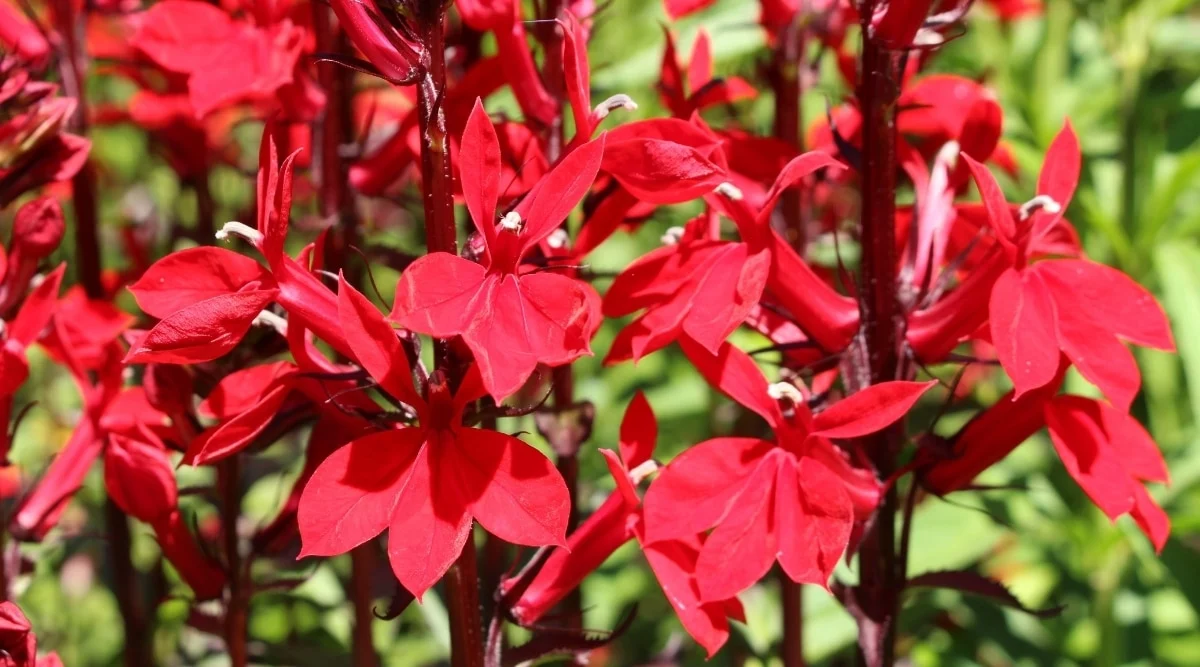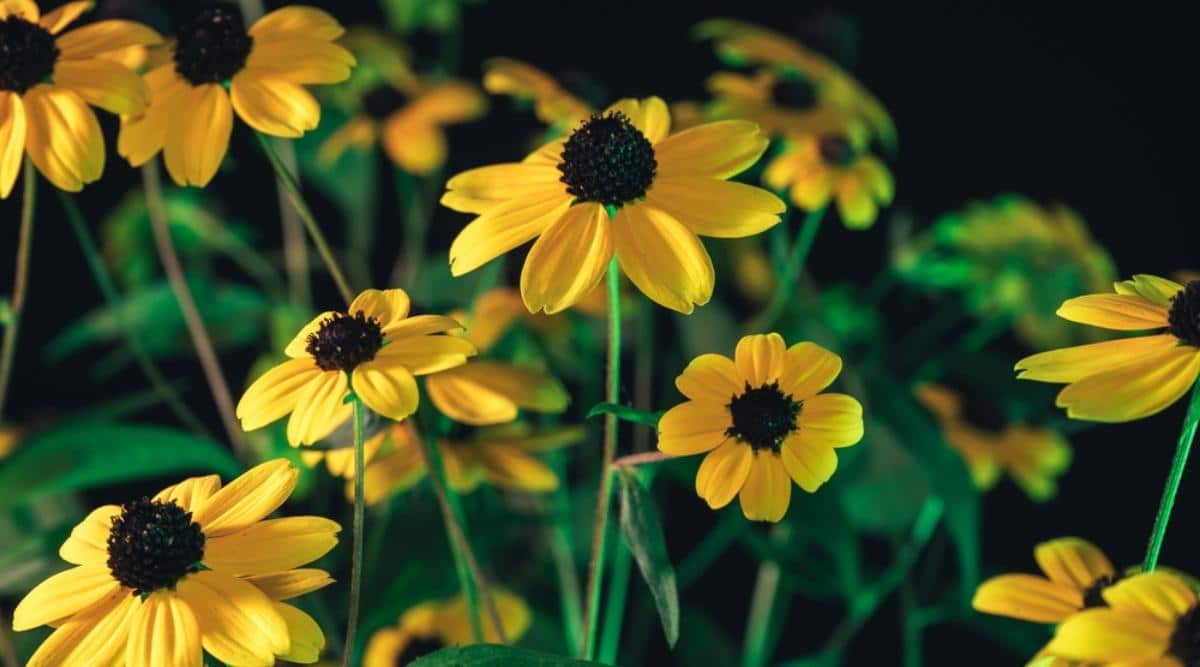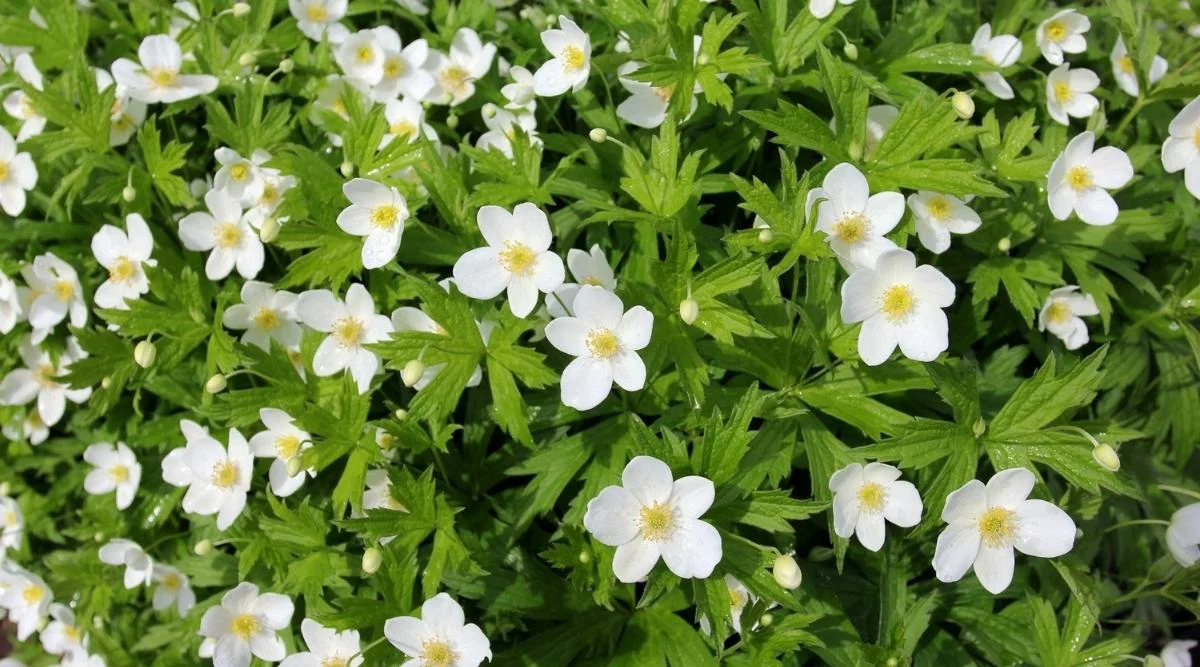
Cardinal Flower: A Bold Beauty for Water Gardens
japanchildrenrights.org – The Cardinal Flower (Lobelia cardinalis) is a stunning perennial plant known for its striking spikes of vibrant red flowers and its ability to thrive in wet, boggy areas. Native to North America, this plant is a favorite among gardeners looking to add dramatic color and attract hummingbirds to their garden spaces. With its tall flower spikes and rich red blooms, the Cardinal Flower is especially suited for water gardens, pond edges, and rain gardens, where it can flourish in moist, shady conditions.
Botanical Description
Cardinal Flower is a herbaceous perennial that grows between 2 to 4 feet tall, depending on the growing conditions. The plant has dark green, lance-shaped leaves that are slightly toothed, creating an attractive backdrop for the vibrant red flowers. The flowers themselves are tubular and arranged in tall, upright spikes, with each spike bearing dozens of individual blossoms. Blooming from mid-summer to early fall, these brilliant red flowers stand out in any landscape and create a dramatic display that lasts for weeks.
The vivid red hue of the flowers is especially appealing to hummingbirds, making the Cardinal Flower a popular choice for bird-friendly gardens.
Habitat and Growth Conditions
Cardinal Flowers naturally grow in moist, low-lying areas such as stream banks, pond edges, and marshes. They thrive in USDA zones 3 to 9 and prefer consistently moist to wet soil. This plant can tolerate partial shade to full sun, but it generally performs best in part shade, where the soil remains damp and cool. Cardinal Flowers are especially well-suited for rain gardens or wetland restoration projects due to their ability to grow in saturated soils.
Although they can tolerate standing water for short periods, well-drained soil with plenty of moisture is ideal for healthy growth.
Ecological Importance
The Cardinal Flower is highly valued for its role in supporting wildlife, especially hummingbirds, which are attracted to its bright red flowers and tubular shape. The plant is an excellent source of nectar for these birds, as well as for butterflies and bees. In areas where the plant grows naturally, it plays a vital role in providing food and habitat for various pollinators.
In addition to supporting wildlife, Cardinal Flower is a valuable plant for wetland conservation and water garden design. Its ability to tolerate wet, boggy soils makes it a perfect plant for improving water quality by absorbing excess nutrients and stabilizing soils along stream banks and pond edges.
Cultivation and Care
Cardinal Flower can be grown from seeds or nursery-grown plants. When starting from seed, it’s best to sow them in the fall or early spring. The seeds need light to germinate, so they should be sprinkled on the soil surface rather than buried. Cardinal Flowers can also be propagated by dividing clumps in early spring or after flowering in the fall.
This plant prefers moist, rich soil and should be watered regularly, especially during dry periods. Mulching around the base of the plant will help retain moisture and keep the roots cool. In colder regions, adding a layer of mulch in the fall can protect the roots from freezing temperatures.
Deadheading spent flowers can encourage a longer blooming season, while cutting back the plant after flowering may promote new growth. Cardinal Flower can sometimes be short-lived in the garden, but allowing it to self-seed or planting new plants every few years can ensure its continued presence in the garden.
Ornamental Uses
Cardinal Flower is a standout plant for water gardens, bog gardens, and pond edges, where its bright red blooms create a striking contrast against the green foliage of other wetland plants. It is often planted alongside other moisture-loving perennials like ferns, irises, and sedges to create a lush, natural look. The plant’s tall flower spikes also make it an excellent choice for the back of borders or in naturalized garden settings.
In addition to its use in water features, Cardinal Flower is a great addition to pollinator gardens, attracting hummingbirds and butterflies with its nectar-rich flowers. Its bold color makes it an eye-catching focal point in shady or woodland gardens, where few other plants offer such vibrant blooms.
Conclusion
The Cardinal Flower is a remarkable plant that combines bold color with ecological benefits. Its bright red flowers, ability to thrive in wet conditions, and attractiveness to pollinators make it a prized choice for gardeners looking to enhance water gardens, rain gardens, or shaded borders. Whether planted along the edge of a pond or in a boggy garden bed, the Cardinal Flower is sure to impress with its beauty and its support for local wildlife.


